_We may earn revenue from the products available on this page and participate in affiliate programs. Learn more ›
_
Every topwater strike makes bass fishing more fun. But there’s something about topwater frog fishing—watching that almost comical-looking bait hop and sputter and then get suddenly obliterated—that takes fishing’s fun factor to another level. That’s a good enough reason to tie on a topwater frog—but it’s not the only reason.
Frog fishing for bass also happens to be highly effective if you know all the little tips and tricks for getting the most from these surface baits
. So, to the end, we asked our own bass fishing experts, along with several tour pros, to share their best frog fishing secrets. Below are 15 tips for getting more bass to blow up on your frog lure, all season long, from spring all the way into fall.

Learn how to get the all-new Field & Stream journal!
15 Topwater Frog Fishing Tips and Tricks
1. Sight-Fish Bass Beds with a Frog
Frogs, and other floating lures, offer a distinct advantage for bed fishing: You can position one directly over a bed and let it remain there. Start by casting beyond the bed to avoid spooking the fish. If the spot is close to shore, try to cast your lure onto the bank, then gently slide it into the water. Swim the frog slowly over the target and let it stay on the surface where the bass will notice it. Be patient. After a minute or so, a slight twitch is often all it takes to get a strike. —S.P.
2. Blind-Fish Cover with a Frog
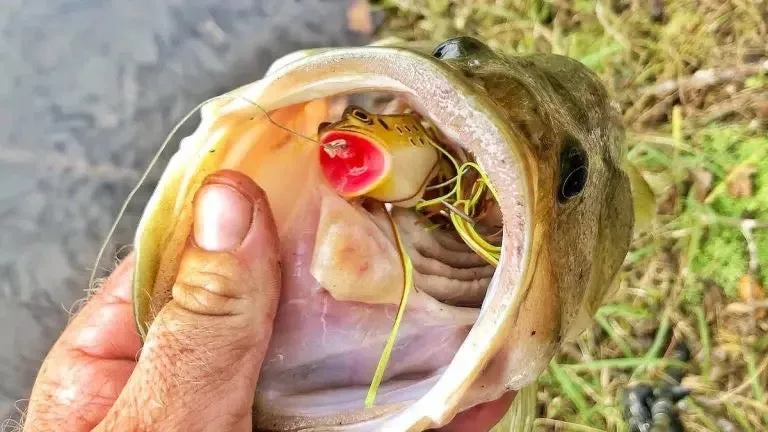
This largemouth engulfed a frog lure. Shaye Baker
Even when you can’t see the beds, cover such as downed trees, stumps, weeds, and lily pads are all excellent places to catch spawning bass, as well as fish preparing for or just finishing the process. There’s almost no cover too thick or too gnarled to fish effectively with a weedless frog. Here, experienced fishermen commonly use a stiff flipping rod and 50- or 65-pound-test braided line. With this setup, they “walk” a frog over weeds or around wood by twitching the rod just enough to make the lure “sashay” from side to side. —S.P.
3. Frog the Outside Edges
Perhaps the most common way to fish a plastic frog in spring is with a slow stop-and-go retrieve along the outside edges of shoreline cover. You may pick up bedded bass here, but these are prime areas for prespawn fish, especially in slightly deeper water. Make a long cast, then slowly twitch the frog back. Be sure to work any small sections of isolated cover near the edge, even tiny weed patches. Use the same slow stop-and-go retrieve across grassy and rocky points, especially those leading into spawning coves. These often serve as staging areas for prespawn bass, as well as for fish that have just left the spawning beds. —S.P.
4. Work a Frog in Open Water
You don’t need visible cover to have success frog fishing in spring. On clear lakes, bass often stage and even spawn in deeper water near steep-falling shorelines and bluff banks. Cast your frog parallel to the bank, then work it back with a steady retrieve. Generally, it’s best to get the lure close to the bluff. You may be surprised at the depths from which a bass will come to nail a floating frog. —S.P.
5. Skip a Frog
Skipping a frog underneath cover is another great way to catch bass on a frog throughout much of the year. When bass are spawning, they often like to tuck under docks or overhanging bushes to protect their beds from birds of prey and other predators. Similarly, bass seek shelter from the sun in the shade provided by overhead cover during the warmer months.
The forage bass feed on also use the same overhead cover in this way. So there are lots of reasons for bass to get underneath something, and a frog is one of the easiest baits to skip into these areas that are often otherwise hard to access. Look for a frog with a flatter belly as opposed to one with a deep V-shape hull, as the former is easier to skip. —S.B.
6. Reel a Frog
Many traditional hollow body frog lures have some type of skirt material for the legs. But there are several frogs on the market now that either have legs like a real frog or a prop-style tail similar to a Whopper Ploppe
r. These frogs are intended to be reeled in, rather than hopped or popped, so that the legs or tail can generate action.

These are great baits to use when you need to cover a lot of water, like while fishing down a bank between bream beds for instance. There may be 200 or 300 yards of shoreline that are less productive than two bookend bream beds. These stretches are often still worth fishing, but you just want to do it quickly. Using a frog like the Booyah Toad Runner
lets you do that while still being able to throw in relatively thick cover. —S.B.
7. Frog the Mats
On lakes laden with vegetation, bass often seek shelter in the thickest mats they can find. There are very few baits that are effective in this heavy cover, but a frog is one of them. Frog fishing over the top of a mat is a great way to draw the bass’s attention upward and generate a strike. It’s also important to fish super slow, making sure the bass have time to locate the bait. You can even add rattles and small weights to the frog by inserting them into the hook hole in the belly. The weights will help the frog make a deeper impression in the mat and the rattles will add a little sound to help the bass find the bait. —S.B.
8. Watch for Bugs

A insect hatch can start a feeding frenzy among baitfish, which you can imitate with a frog lure. Shaye Baker
A frog is one of the best baits for targeting bass that are relating to insect hatches. These bass are not usually feeding on the insects themselves, but rather the baitfish that are drawn to the surface to eat the insects. And a popping frog in particular mimics these feeding baitfish really well. Other baits, like poppers, work really well around insect hatches too. You can throw a popper into a mayfly hatch for instance and the bass are likely to explode on it, believing the popper is a bream eating the bugs.
But a popping frog can do the same thing, and the landing ratio is much better with the bigger hooks, versus the small treble hooks of a popper. You can actually toss a frog into the overhanging bushes where the mayflies reside, to shake a few into the water periodically and initiate a feeding frenzy. Then just snatch the frog out of the bush. If you try doing this with a popper, however, you’re liable to bend the hooks or have to go get the bait unhung. —S.B.
9. Tweak a Frog
There are lots of little tricks you can do to your frogs to maximize their potential. We already mentioned using rattles and weights when fishing overtop matted vegetation. And a rattle is often a nice touch even out in open water, though the weights will cause a frog to sink in this scenario. Also, keep in mind that the body of the bait will still need to be able to compress in order to hook a bass. If you use multiple rattles for example, they can get in the way of good hookups. So when it comes to weight or rattles, always be careful not to overdo it.
It’s also a good idea to shorten the legs and open the hook up a bit in all frogging situations. The skirted legs are often really long, which can allow a fish to pull the bait under without getting near the hook, leading to a swing and a miss. Shortening the legs usually helps bass get the bait better. And bending the hook points up slightly helps with the hookup ratio, giving the hook a better chance to connect. —S.B.
10. Fish a Frog in the Fall
Although many people think of frog fishing as a summer tactic, the topwater lures can also be deadly in the fall. In fact, well-known crappie guide and tackle designer Sam Heaton believes that these baits produce best in the fall, when yellow blooms sprout on milfoil mats. “I almost always fish light colors, like white and chartreuse,” he says. “I can see light frogs better when a bass strikes and misses, and that stops me from jerking the rod. If you let the bait sit right there in the water and jiggle it a little bit, the bass will come back and take another shot at it.” To improve his strike-to-catch ratio, Heaton exchanges the heavy stock hooks found on most frogs with a thinner wire Mustad double hook. A stiff flipping rod and 50-pound no-stretch braided line ensure that the hook points dig deep. —M.H.
Read Next: The 25 Best Topwater Lures Ever Created
Three Tips for Frog Fishing Lily Pads
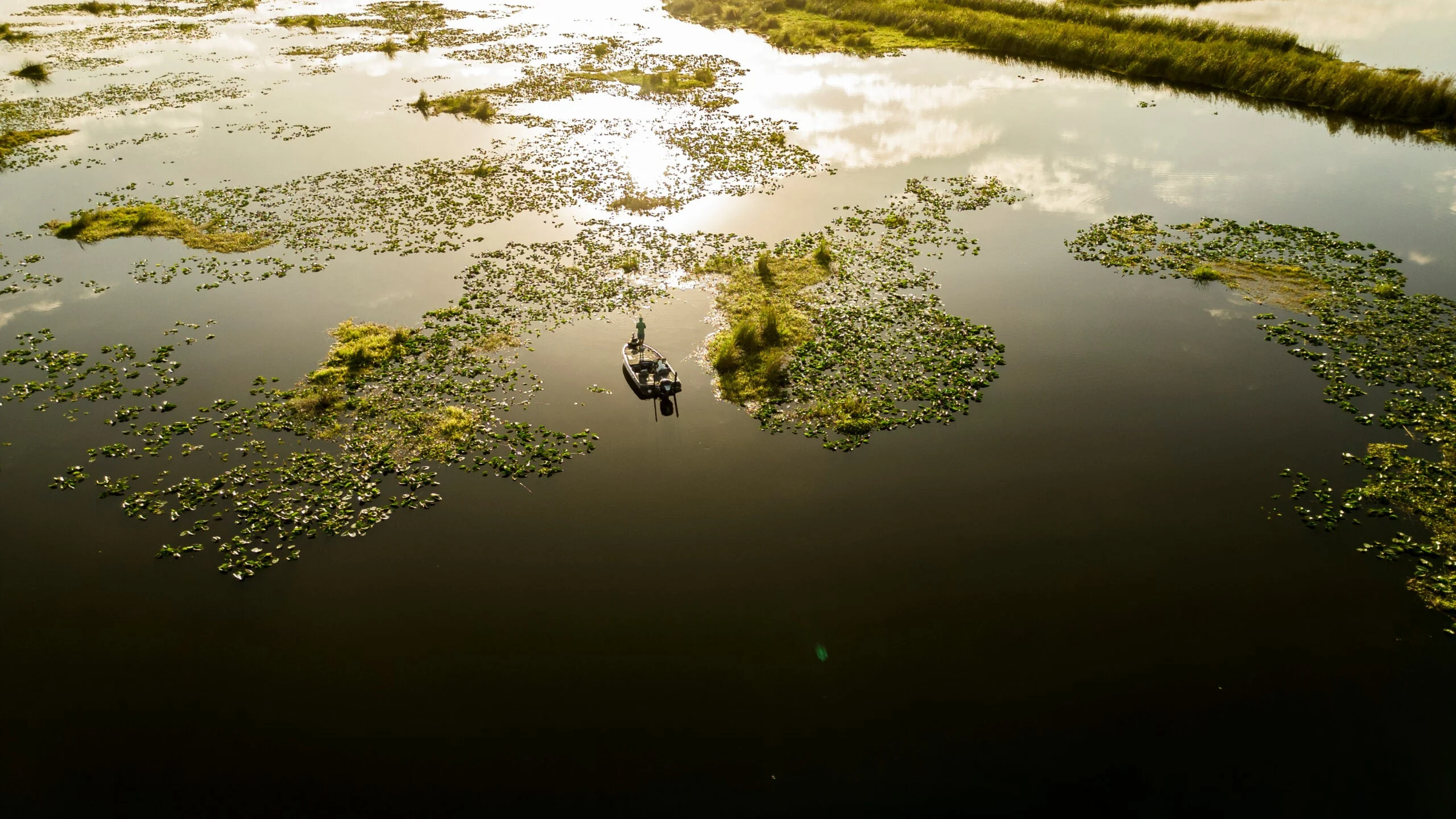
Frog lures are taylor-made for fishing lily pads. Brandon / Adobe Stock
Frog fishing over lily pads gives you a great shot at a topwater trophy, but this vegetation also tends to hold large numbers of fish. Working this heavy cover effectively, however, requires proper gear and an understanding of how to bring a frog to life. Here’s what you need to know to raise a giant.
1. Gear Up for a Frog Fishing Fight
Getting a toad out of the pads requires a lot of winching power. Opt for a heavy-action baitcasting rod measuring 7 or 8 feet. It needs to be able to handle 1⁄2- to 11⁄2-ounce lures and heavy line. Match your stick with a quality reel that has plenty of line capacity and spool it 50- or 65-pound braid. While there are countless frog options on the market, those with rubber-tassel legs are my favorites for fishing pads, as they maintain action at any speed.
2. Find the Perfect Pads
Not all lily pads are created equal. This is especially true if you’re hunting for giant bass. Huge expanses of lively green pads look tempting but often aren’t worth your time. In sprawling pad beds, bass can be almost anywhere, and the heavy growth makes them difficult to extract. Smaller beds tend to concentrate fish and are easier to work from different angles. Look for ones with other elements mixed in, such as stumps, logs, or a deep ditch, which can be identified by a void in the surface vegetation. If you can pinpoint a bed with any of these characteristics that also happens to be growing in deeper water, you may have just hit the jackpot.
3. Wait for It
Drawing strikes and planting hooks with hollow-body frogs takes practice. Long casts will give you the best opportunity to contact a fish and give it enough time to track your bait and strike. A long cast will also produce a hard landing, which can be the key to getting a fish’s attention right away. After the frog smacks down, hop it across the pads, letting it sit still for a few seconds anytime it reaches an open hole. Shaking the rod slightly to get the legs moving while it’s resting can seal the deal with a tracking bass. The hardest part is waiting to set the hook when you see the explosion. If you swing instantly, you’re just going to pull the frog away from the fish. Instead, pause for just a moment to allow the bass to turn its head and compress the bait, then take up the slack line and set as hard as you can.
Three Killer Frog Fishing Rigs for Big Bass
Frog baits can lose their potency over time if you keep throwing that same pattern over and over. Rather than look for the next great frog, I started tweaking my favorite patterns to re-up their hog-fooling capabilities–and I’m not the only one doing this. My frog tweak, plus two from pro anglers Jamie Pistilli and Jonathon VanDam, will turn the heads of the biggest, most pressured bass in the lake. Here they are.
1. Add a Suction Cup to a Frog
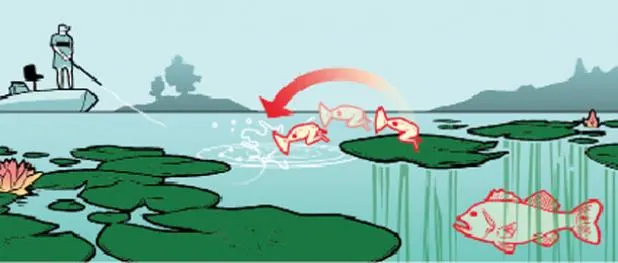
Illustrations by Jason Schneider
I add a clear suction cup to the head of my hollow-body frogs to create a surface disturbance that mimics the sound of a frog plopping off a lily pad. To do this, just poke a hole through the cup’s middle, thread it over the hook eye, and secure it in place with superglue. If fish are wary, push the suction cup backward, like a broken umbrella, to reduce the pop and make the bait slide from side to side.
2. Make a Frog Go Swimming
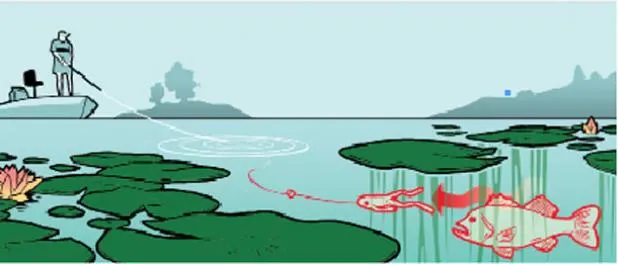
host Jamie Pistilli drowns his soft-plastic frogs by Texas-rigging them on a 5/0 hook with a split shot a foot up the line. This way, the buoyant frog hovers below the surface. Weave the bait through lily stalks and be ready for reaction strikes. “A straight retrieve at medium speed produces the most strikes,” Pistilli says. “But make sure you always look for movement behind the bait before you yank it out of the water. Bass will follow right to the boat.”
3. Clip a Frog’s Legs
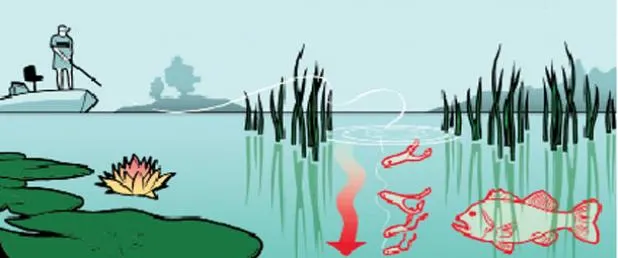
Jonathon VanDam cuts 1⁄2 inch off each leg on sinking soft-plastic frogs, which reduces the amount of noise the bait makes in the water but maintains just enough kick for the frog to stand out. He pitches the frog to a hole in the grass and lets it fall. The flutter on the drop looks like a real frog swimming below the grassline. The short legs make the frog look “smart,” VanDam says. A real frog doesn’t want to draw attention by fully extending its legs when it swims. —B.D.
**Read Next: Smallmouth vs Largemouth Bass
**
Our Experts’ Favorite Frog Fishing Lures
1. Lunker Hunt Lunker Frog
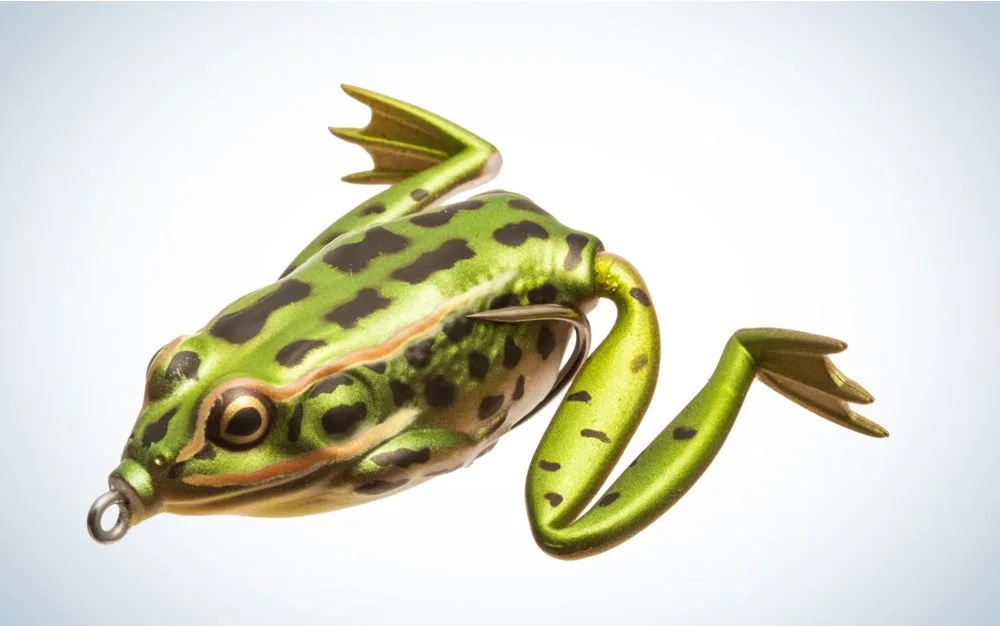
These hollow-body baits with extending and retracting legs are realistic and deadly on their own. But add a suction cup to one of these lifelike amphibians, and it becomes just lethal. —B.D.
2. LiveTarget Frog
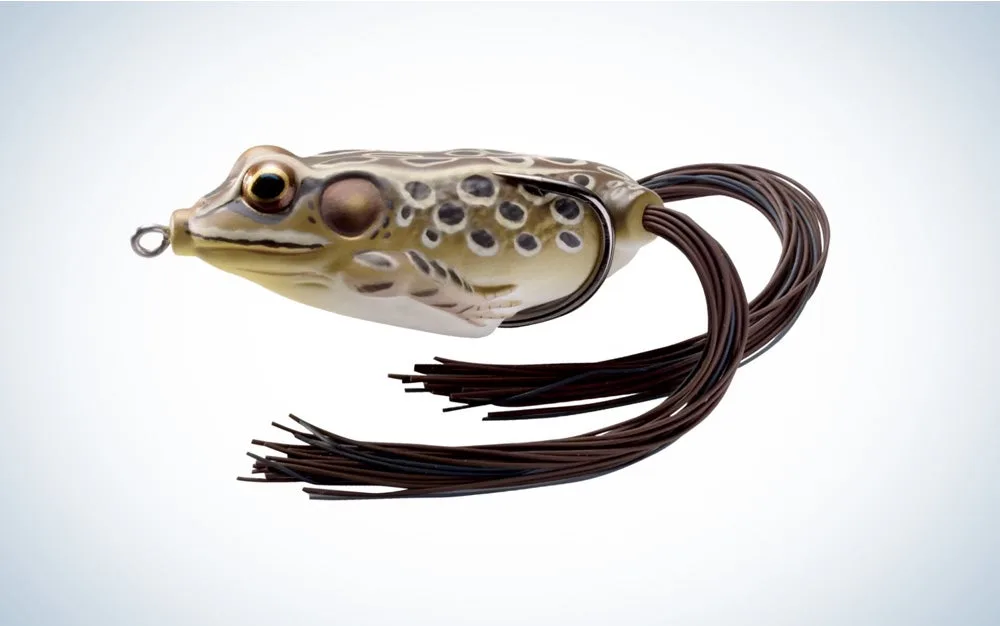
Frog baits with rubber-tassel legs, like the LiveTarget Frog, are ideal for fishing lily pads, because any time those legs are in the water, or partially in the water, they are going to have some action. —M.M.
3. Strike King Rage Tail Toad
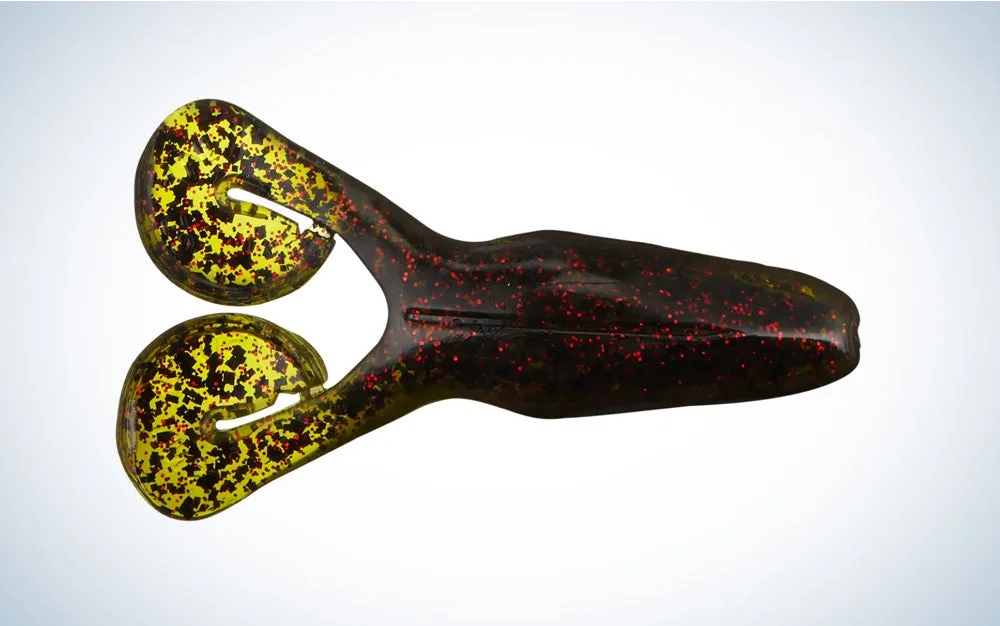
This is Jonathon VanDam’s choice for hole-punching. The long legs offer plenty of extra length to trim back, creating a frog with a more subtle swimming and falling action. —B.D.
4. Booyah Toadrunner

The Toadrunner has a prop-style tail that creates a lot of commotion; it’s perfect for searching in open water but can still be fished in heavy cover, too. —S.B.
**Read Next: The Best Spring Bass Lures of 2024
**



